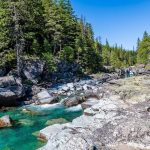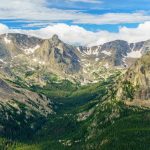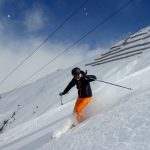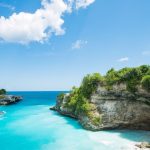The world's best places to go snowboarding span from the powder fields of Whistler Blackcomb to the glacial runs of Chamonix. Whether you seek the deep snow of Niseko United, the legendary terrain of Jackson Hole, or the freestyle paradise of Laax, each destination offers something unique. These mountains have shaped countless riders and continue to draw snowboarders from every corner of the globe.
Keep reading as we explore the top snowboarding destinations that will transform your riding and create memories that last a lifetime. From North American giants to European classics and Japanese powder havens, these are the mountains every snowboarder should experience.
List of Contents
- 1. Whistler Blackcomb: Two Mountains, Endless Possibilities
- 2. Park City: America's Largest Ski Resort
- 3. Mammoth Mountain: California's Powder Giant
- 4. Jackson Hole: The Steep and Deep
- 5. Palisades Tahoe: Olympic Legends and Extreme Terrain
- 6. Mt. Bachelor: Oregon's Volcanic Playground
- 7. Breckenridge: Colorado's Historic High-Altitude Haven
- 8. St. Anton: Austria's Legendary Off-Piste Paradise
- 9. Verbier: Switzerland's Four Valleys Giant
- 10. Chamonix: The Birthplace of Extreme Skiing
- 11. Mayrhofen: Austria's Snowboard Capital
- 12. Les Arcs: France's Purpose-Built Paradise
- 13. Niseko United: Japan's Powder Paradise
- 14. Laax: Europe's Snowboard Mecca
1. Whistler Blackcomb: Two Mountains, Endless Possibilities
Whistler Blackcomb spans 8,171 acres across two connected mountains with terrain for every rider. The resort averages 426 inches of annual snowfall and rarely sees temperatures below -10°C.

Start your day on Whistler Mountain via the Village Gondola, then explore Blackcomb's superior visibility on foggy days. Local riders know to hit the alpine bowls early before wind affects the snow quality.
The Peak 2 Peak Gondola connects both mountains in 11 minutes, offering stunning views of the Coast Mountains and glacier-fed lakes below.
Quick Facts:
- Peak season: December-March
- Getting there: 2 hours from Vancouver via Sea-to-Sky Highway
- Lift tickets: From $89 CAD
- Recommended stay: 4-5 days
- Key areas: Village, Creekside, Upper Village
2. Park City: America's Largest Ski Resort
Park City Mountain combines with neighboring areas to create 7,300 acres of terrain across 41 lifts. The resort sits at 10,000 feet with 300+ inches of annual snowfall and over 300 sunny days per year.
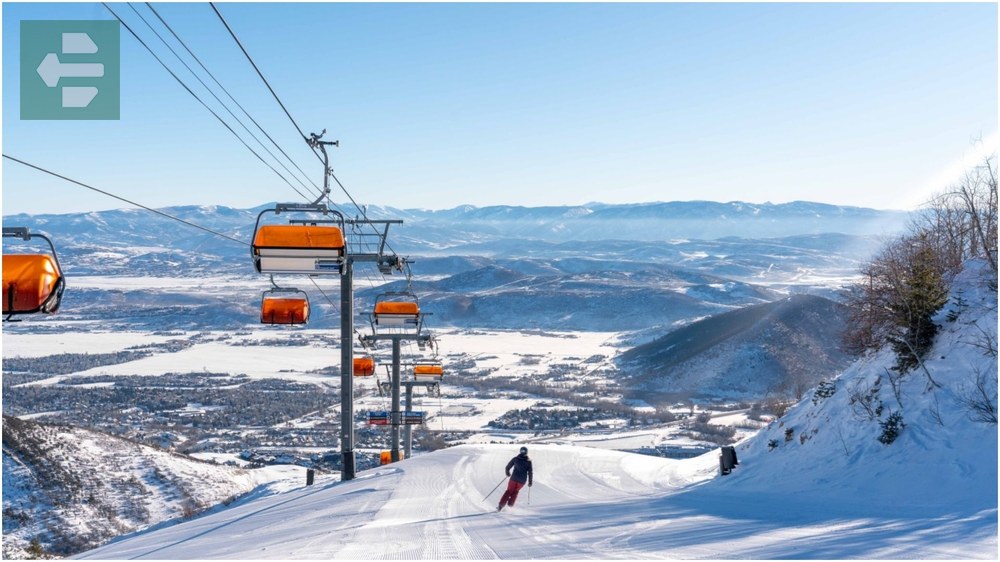
The town's mining heritage means runs wind through old mining structures and ghost town remnants. Take the Town Lift directly from Historic Main Street to access the mountain without driving.
Seven terrain parks cater to every freestyle level, while the back bowls offer untouched powder days after storms roll through the Wasatch Range.
Quick Facts:
- Peak season: December-April
- Getting there: 35 minutes from Salt Lake City Airport
- Lift tickets: From $109 USD
- Recommended stay: 3-4 days
- Key areas: Park City Base, Canyons Village, Historic Main Street
3. Mammoth Mountain: California's Powder Giant
Mammoth Mountain towers at 11,053 feet with 3,500+ skiable acres and an average of 400 inches of snowfall. The season runs from November through June, sometimes extending to August in heavy snow years.
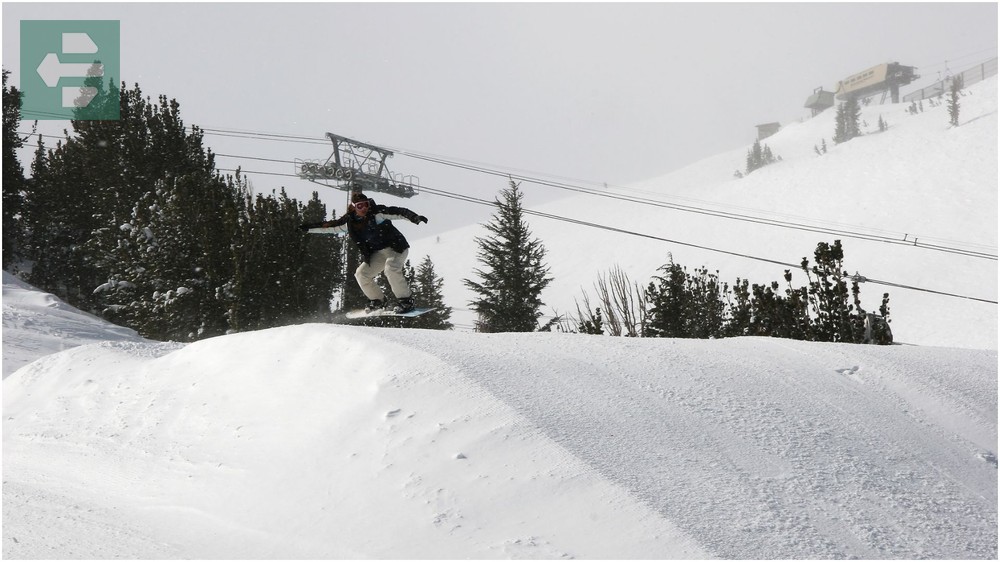
Much of the terrain sits above treeline, offering expansive bowl riding with 360-degree views of the Eastern Sierra. The wind-loaded backside provides consistent powder stashes weeks after storms.
Eight terrain parks include three halfpipes and over 100 features. The Village at Mammoth sits at the base with lodging, dining, and nightlife within walking distance.
Quick Facts:
- Peak season: January-March
- Getting there: 5 hours from Los Angeles via Highway 395
- Lift tickets: From $119 USD
- Recommended stay: 4-6 days
- Key areas: Main Lodge, Canyon Lodge, Eagle Lodge
4. Jackson Hole: The Steep and Deep
Jackson Hole delivers 2,500 vertical feet of challenging terrain with an average of 459 inches of annual snowfall. The famous Aerial Tram accesses expert-only terrain including the legendary Corbet's Couloir.

Locals start early to catch the tram before crowds arrive. The secret to Corbet's is approaching slowly, finding the goat path, and committing to the first turn rather than trying to stop immediately.
The resort caters to advanced riders—50% of terrain is expert level. Casper Bowl fills with wind-loaded snow and stays fresh longer than more accessible areas.
Quick Facts:
- Peak season: December-March
- Getting there: Jackson Hole Airport (15 minutes) or Salt Lake City (5 hours)
- Lift tickets: From $139 USD
- Recommended stay: 4-5 days
- Key areas: Teton Village, Rendezvous Mountain, Apres Vous Mountain
5. Palisades Tahoe: Olympic Legends and Extreme Terrain
Palisades Tahoe spans 6,000 acres across two mountains with 400+ inches of annual snowfall. The 1960 Winter Olympics were held here, establishing its reputation for challenging terrain and reliable conditions.
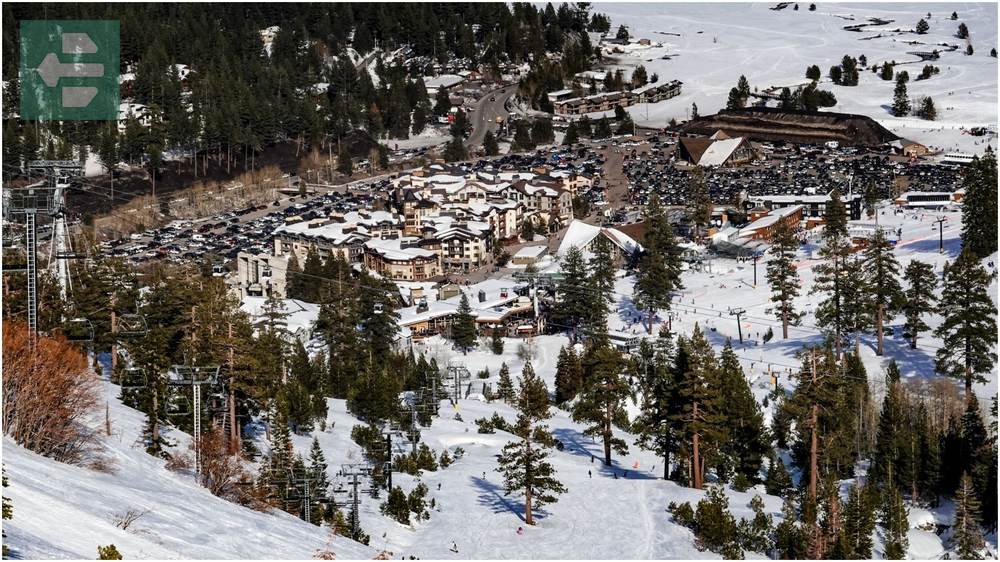
The Aerial Tram holds 110 people and accesses High Camp with restaurants, hot tubs, and a museum. Advanced riders gravitate toward KT-22, while the backside offers stunning Lake Tahoe views.
The base-to-base gondola connects Palisades with Alpine Meadows, creating endless terrain variety from groomed cruisers to extreme chutes and bowls.
Quick Facts:
- Peak season: December-April
- Getting there: 3 hours from San Francisco via Interstate 80
- Lift tickets: From $149 USD
- Recommended stay: 4-5 days
- Key areas: Olympic Valley, Alpine Meadows, High Camp
6. Mt. Bachelor: Oregon's Volcanic Playground
Mt. Bachelor sits on a dormant volcano with 4,318 acres of terrain and 462 inches of average snowfall. The mountain's unique circular shape provides varied aspects and consistent snow conditions.

The Summit Express chair reaches 9,065 feet, offering panoramic views of the Cascade Range including Mount Hood and Mount Jefferson. The backside bowls hold powder for days after storms.
Bend sits 22 miles away with craft breweries, restaurants, and accommodations. The drive up Century Drive provides stunning alpine lake views and old-growth forest scenery.
Quick Facts:
- Peak season: December-March
- Getting there: 3 hours from Portland via Highway 97
- Lift tickets: From $89 USD
- Recommended stay: 3-4 days
- Key areas: West Village, Sunrise Lodge, Pine Marten Lodge
7. Breckenridge: Colorado's Historic High-Altitude Haven
Breckenridge sits at 9,600 feet with five peaks offering 2,908 acres of terrain. The town's Victorian architecture and mining history create an authentic Colorado mountain experience.
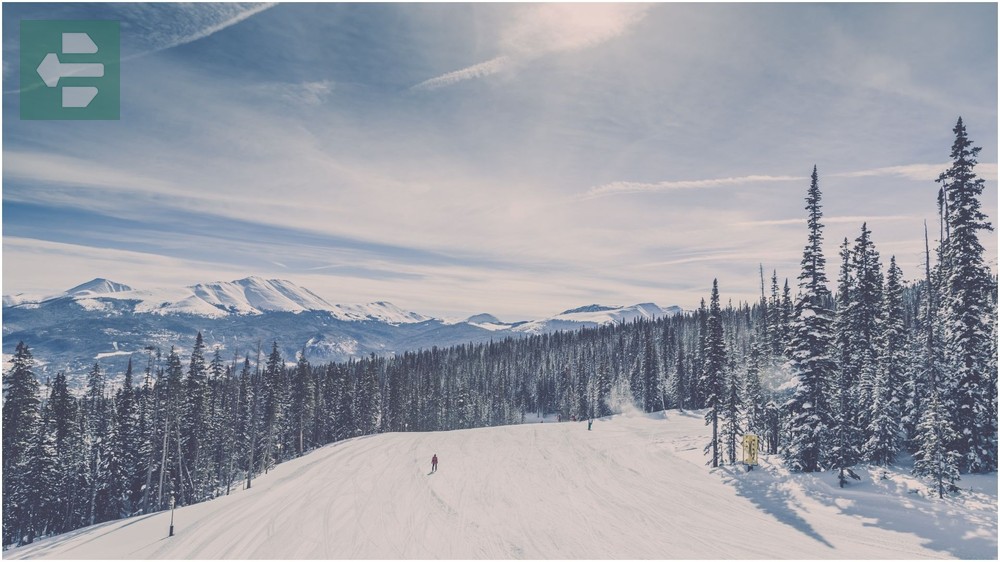
Peak 6 and Peak 7 provide above-treeline bowl riding, while the lower mountains offer tree runs and groomed trails. The Imperial Express SuperChair reaches 12,840 feet—North America's highest lift.
Historic Main Street connects directly to the slopes via the QuickSilver SuperChair. Four terrain parks include the award-winning Freeway Park with features for every ability level.
Quick Facts:
- Peak season: December-March
- Getting there: 2 hours from Denver via Interstate 70
- Lift tickets: From $129 USD
- Recommended stay: 4-5 days
- Key areas: Peak 7, Peak 8, Peak 9, Historic Main Street
8. St. Anton: Austria's Legendary Off-Piste Paradise
St. Anton am Arlberg pioneered alpine skiing and maintains its reputation for challenging terrain and deep powder. The resort receives over 300 inches of annual snowfall with extensive off-piste opportunities.
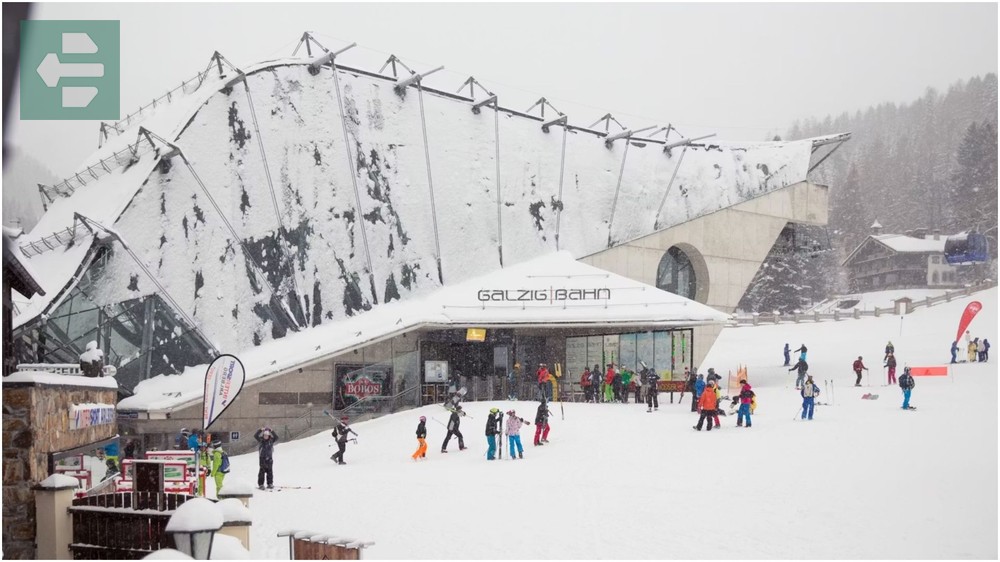
The Valluga summit offers Austria's most extreme terrain—guided descents only due to avalanche risk. For accessible freeriding, the Rendl area provides excellent tree runs and open bowls.
Après-ski culture runs deep here. The MooserWirt and Krazy Kanguruh start the party mid-afternoon, continuing the century-old tradition of celebrating good powder days.
Quick Facts:
- Peak season: January-March
- Getting there: 1 hour from Innsbruck Airport
- Lift tickets: From €59 EUR
- Recommended stay: 5-7 days
- Key areas: Galzig, Valluga, Rendl, Kapall
9. Verbier: Switzerland's Four Valleys Giant
Verbier anchors the massive 4 Vallées ski area with 410 kilometers of terrain across 94 lifts. The resort sits at 1,500 meters with reliable snow conditions and stunning Mont Blanc views.
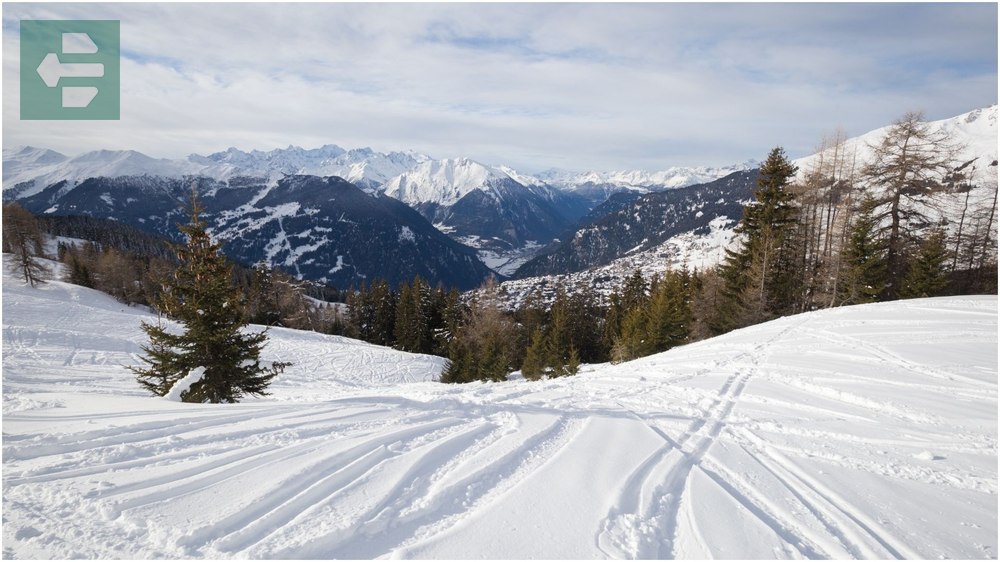
Advanced riders head to the off-piste routes accessed from Mont Fort at 3,330 meters. The Tortin mogul field separates casual skiers from serious riders—it's steep, long, and relentless.
At 6:30 AM on a February morning, I watched the sunrise paint Mont Blanc gold while riding the first cable car up. That moment reminded me why Verbier attracts riders from around the world.
Quick Facts:
- Peak season: December-April
- Getting there: 2.5 hours from Geneva Airport
- Lift tickets: From CHF 62 EUR
- Recommended stay: 5-7 days
- Key areas: Verbier, Nendaz, Veysonnaz, Thyon
10. Chamonix: The Birthplace of Extreme Skiing
Chamonix Valley spreads across multiple ski areas beneath Mont Blanc's imposing north face. The Vallée Blanche glacier run stretches 20 kilometers from the Aiguille du Midi cable car.

The terrain demands respect—many runs require guides, avalanche equipment, and advanced skills. Le Tour offers gentler slopes for warming up before tackling the valley's legendary descents.
Local guides know which couloirs hold powder and which face the morning sun. Book them early during peak season—their knowledge means the difference between epic days and dangerous situations.
Quick Facts:
- Peak season: January-March
- Getting there: 1 hour from Geneva Airport
- Lift tickets: From €48 EUR (varies by area)
- Recommended stay: 6-8 days
- Key areas: Grands Montets, Brévent-Flégère, Le Tour, Les Houches
11. Mayrhofen: Austria's Snowboard Capital
Mayrhofen's Penken area hosts World Cup events and features world-class terrain parks. The resort spans six interconnected areas with the Hintertux Glacier providing year-round riding.

The Ahorn side offers wide, gentle slopes perfect for carving and learning. Advanced riders tackle the Harakiri—Austria's steepest groomed run at 78% gradient.
The Vans Penken Park ranks among Europe's best with features designed by professional riders. Spring sessions extend until May on the glacier, offering perfect corn snow conditions.
Quick Facts:
- Peak season: December-March
- Getting there: 1 hour from Innsbruck Airport
- Lift tickets: From €52 EUR
- Recommended stay: 4-5 days
- Key areas: Penken, Ahorn, Hintertux Glacier, Finkenberg
12. Les Arcs: France's Purpose-Built Paradise
Les Arcs connects to La Plagne via the Vanoise Express cable car, creating Paradiski with 425 kilometers of terrain. The resort's futuristic architecture contrasts with traditional alpine villages below.

The Aiguille Rouge cable car reaches 3,226 meters with a 7-kilometer descent to Villaroger. This run drops 2,000 vertical meters through varied terrain from glacier to village level.
Arc 1950 provides ski-in/ski-out luxury accommodation, while Arc 2000 offers budget-friendly options. The high-altitude base ensures reliable snow conditions throughout the season.
Quick Facts:
- Peak season: December-March
- Getting there: 2 hours from Geneva Airport
- Lift tickets: From €49 EUR
- Recommended stay: 5-6 days
- Key areas: Arc 1600, Arc 1800, Arc 1950, Arc 2000
13. Niseko United: Japan's Powder Paradise
Niseko United receives 14 meters of annual snowfall—some of the deepest, driest powder on earth. Four interconnected resorts surround the active Niseko Annupuri volcano.

The powder stays untracked for days due to tree spacing and resort policies protecting off-piste areas. Morning temperatures of -20°C create perfect snow crystals with 8% moisture content.
Traditional Japanese hospitality includes onsen hot springs, kaiseki dining, and ryokan accommodations. The contrast between brutal cold and warming traditions creates unforgettable experiences.
Quick Facts:
- Peak season: January-February
- Getting there: 2 hours from New Chitose Airport (Sapporo)
- Lift tickets: From ¥5,500 JPY
- Recommended stay: 6-8 days
- Key areas: Grand Hirafu, Hanazono, Niseko Village, Annupuri
14. Laax: Europe's Snowboard Mecca
Laax earned its reputation as Europe's snowboard capital through world-class terrain parks and the Freestyle Academy indoor training facility. The resort spans 224 kilometers across three peaks reaching 3,018 meters.

The P60 Laax Park features Europe's largest halfpipe and hosts major competitions. Four different parks cater to every level, from beginners learning basic jumps to professionals training double corks.
The Vorab Glacier extends the season from October through May. Freeride terrain includes wide bowls, steep couloirs, and perfectly spaced trees for powder hunting.
Quick Facts:
- Peak season: December-March
- Getting there: 1.5 hours from Zurich Airport
- Lift tickets: From CHF 62 EUR
- Recommended stay: 4-6 days
- Key areas: Crap Sogn Gion, Crap Masegn, Vorab Glacier
The mountains call differently to each rider. Some chase the deepest powder in Niseko's birch forests. Others seek the steepest lines in Chamonix's high alpine.
These fourteen destinations represent snowboarding's greatest stages. Each mountain teaches different lessons about snow, terrain, and the simple joy of linking turns down a mountainside.
Your board waits. The lifts are running. Choose your mountain and go ride.


